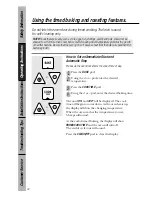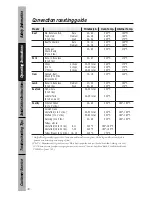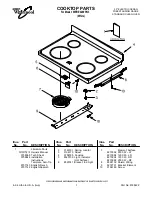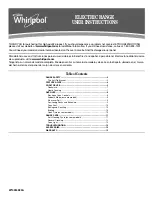
Using the probe.
The probe is designed for use in high temperatures. Use
of probes other than the one provided with this product
may result in damage to the probe.
Never leave your probe inside the oven during a self-cleaning cycle.
Use the handles of the probe and plug when inserting
and removing them from the meat and wall outlet.
■
To avoid damaging your probe, do not use tongs to
pull on the cable when removing it.
■
To avoid breaking the probe, make sure food is
completely defrosted before inserting.
■
To prevent possible burns, do not unplug the probe
from the outlet until the oven has cooled.
Do not store the probe in the oven.
The temperature probe has a skewer-
like probe at one end and a plug at
the other end that goes into the outlet
on the oven wall.
24
Operating Instr
uctions
Installation Instr
uctions
Safety Infor
mation
Tr
oubleshooting T
ips
Customer Ser
vice
After preparing the meat and placing it on a trivet or on
the broiler pan grid, follow these directions for proper
probe placement.
Lay the probe on the outside of the meat along the
top or side and mark with your finger where the
edge of the meat comes to on the probe. The point
should rest in the center of the thickest meaty part
of the roast.
Insert the probe into the meat up to the point
marked off with your finger. It should not touch the
bone, fat or gristle.
No more than 2 inches of the probe, not counting the handle,
should be left exposed outside the meat.
For roasts with no bone, insert the probe into the
meatiest part of the roast. For bone-in ham or lamb,
insert the probe into the center of the lowest large
muscle or joint.
Insert the probe into the center of dishes such as meat
loaf or casseroles. When cooking fish, insert the probe
from just above the gill into the meatiest area, parallel to
the backbone.
Insert the probe into the meatiest part of the inner thigh
from below and parallel to the leg of a whole turkey.
2
1
















































